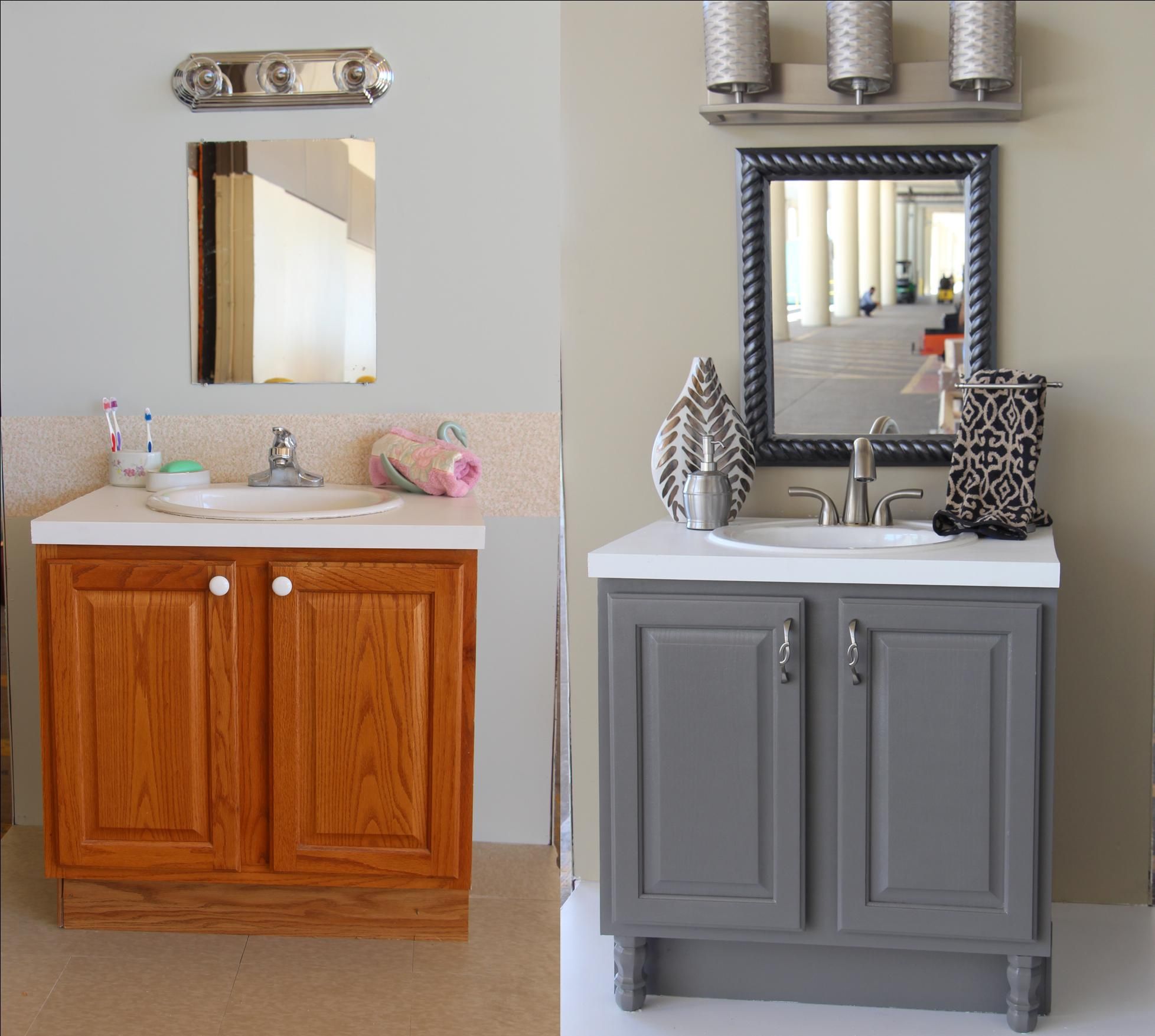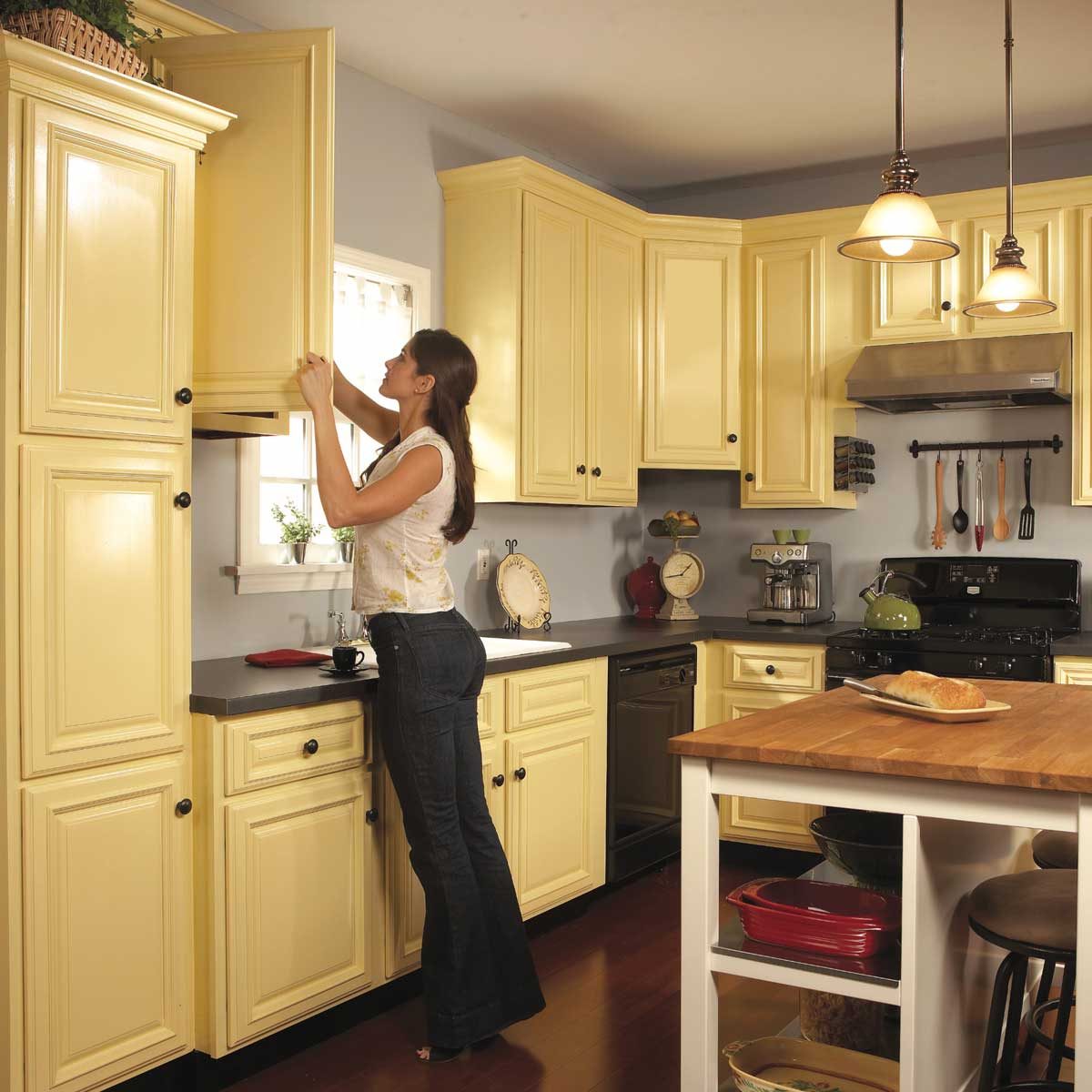Preparing for the Project

Proper preparation is the key to a successful spray painting project. Just like a painter meticulously prepares their canvas, you need to lay the groundwork for a smooth and satisfying transformation of your bathroom cabinets. This ensures a professional-looking finish and a long-lasting result.
Essential Supplies
Having the right tools and materials is crucial for a successful spray painting project. It’s like having the right ingredients for a delicious meal. A well-stocked toolkit will make the process easier and more efficient.
- Spray paint: This is the heart of the project, and choosing the right type is essential for achieving the desired look and durability.
- Primer: This acts as a base coat, promoting adhesion and ensuring a smooth, even finish.
- Sandpaper: Different grits are needed for smoothing surfaces and creating a rough texture for better paint adherence.
- Painter’s tape: This protects areas you don’t want to paint, ensuring clean lines and a professional look.
- Drop cloths: These protect your floors and surrounding areas from paint splatters.
- Cleaning supplies: Degreaser, soap, and water are essential for cleaning the cabinets thoroughly before painting.
- Safety gear: Gloves, mask, and eye protection are essential for protecting yourself from paint fumes and dust.
- Paint thinner: This is used for cleaning spray paint nozzles and brushes.
- Paint stirring stick: This ensures the paint is well-mixed before application.
- Screwdriver: This is used to remove cabinet doors and hardware for easier painting.
Choosing the Right Spray Paint
Selecting the appropriate spray paint is essential for achieving a durable, long-lasting finish on your bathroom cabinets. Consider factors like durability, finish, and color options when making your choice.
| Type of Spray Paint | Durability | Finish | Color Options |
|---|---|---|---|
| Acrylic Lacquer | High | Glossy, Semi-gloss, Satin | Wide variety |
| Epoxy | Very High | Glossy, Semi-gloss | Limited color options |
| Oil-based Enamel | High | Glossy, Semi-gloss, Satin | Wide variety |
| Melamine | Moderate | Matte | Limited color options |
Preparing the Cabinets for Painting
Thorough preparation is essential for a successful paint job. It’s like preparing a canvas for a masterpiece. This involves cleaning, sanding, and masking to ensure the paint adheres properly and creates a smooth, even finish.
- Remove the Cabinet Doors and Hardware: This allows you to paint all surfaces evenly and prevents accidental paint splatters on hardware.
- Clean the Cabinets: Use a degreaser and soap to remove dirt, grease, and grime. This ensures the paint adheres properly to the surface.
- Sand the Cabinets: Use sandpaper to smooth out any rough spots and create a rough texture for better paint adherence. Start with a coarse grit and gradually move to a finer grit.
- Mask Off Surrounding Areas: Use painter’s tape to protect areas you don’t want to paint, such as walls, floors, and countertops.
- Apply Primer: This acts as a base coat, promoting adhesion and ensuring a smooth, even finish. Apply the primer evenly with a brush or roller.
Spray Painting Techniques

Spray painting bathroom cabinets can give them a fresh, new look. Mastering the techniques will help you achieve a smooth, even finish that will last.
Using a Spray Gun
Using a spray gun can be challenging but offers a professional-looking finish. Here are some expert tips for achieving optimal results:
* Thinning the Paint: Thinning the paint with the appropriate thinner, following the manufacturer’s instructions, is essential for proper spray application. Thinned paint will flow smoothly and evenly, minimizing the risk of drips and runs.
* Adjusting the Spray Gun Settings: Adjusting the spray gun’s pressure and fan width is crucial. Experiment with different settings to find the best combination for your project and paint type.
* Applying Even Coats: Apply thin, even coats of paint, overlapping each stroke by about 50%. Avoid holding the gun in one spot for too long, as this can lead to paint buildup and runs.
Holding and Moving the Spray Gun
Holding and moving the spray gun correctly is critical for a smooth, even finish:
* Maintain a Consistent Distance: Hold the spray gun at a consistent distance from the surface, usually about 6-8 inches. This will ensure that the paint is applied evenly.
* Use a Smooth, Even Motion: Move the spray gun in smooth, even strokes, overlapping each stroke by about 50%. Avoid jerky movements, as this can create streaks and uneven coverage.
* Angle the Spray Gun: Angle the spray gun slightly, about 30 degrees, to the surface you’re painting. This will help create a more even finish.
Multiple Thin Coats
Applying multiple thin coats is crucial for achieving a smooth, even finish.
* Drying Time: Allow each coat to dry completely before applying the next. The drying time will vary depending on the paint type and environmental conditions.
* Avoid Drips and Runs: Applying thin coats helps prevent drips and runs. If a drip or run does occur, allow it to dry completely before sanding it smooth.
* Even Coverage: Multiple thin coats will provide better coverage and a more durable finish than one thick coat.
Finishing Touches and Maintenance: How To Spray Paint Bathroom Cabinets

After you’ve applied the final coat of paint, it’s time to add those finishing touches that will elevate your cabinets from good to great. These final steps ensure a professional, durable finish that will stand the test of time.
Ensuring a Professional Finish, How to spray paint bathroom cabinets
Taking the time to carefully sand between coats and apply a clear sealant is essential for achieving a smooth, even finish that looks factory-made. Here are some tips to keep in mind:
- Sanding between coats: Lightly sand each coat with fine-grit sandpaper (220-400 grit) before applying the next. This helps to smooth out any imperfections and creates a better bonding surface for the next layer.
- Using a clear sealant: A clear sealant protects the paint from scratches, stains, and moisture. Apply a couple of thin coats of a water-based polyurethane sealant for optimal protection. Allow each coat to dry completely before applying the next.
Maintaining Painted Cabinets
Proper maintenance ensures your painted cabinets stay beautiful for years to come. Here are some tips to keep them looking their best:
- Clean regularly: Wipe down your cabinets with a damp cloth and mild soap. Avoid harsh cleaners, abrasive scrubbers, and excessive water, which can damage the paint.
- Avoid harsh chemicals: Keep harsh chemicals, such as bleach and ammonia, away from your painted cabinets. These chemicals can strip the paint and leave your cabinets looking dull.
- Protect from scratches: Use protective mats or pads under heavy objects to prevent scratches on the painted surfaces.
- Touch up scratches: If scratches do occur, use a small brush to apply a thin layer of touch-up paint to the affected area.
Common Mistakes to Avoid
Even experienced DIYers can make mistakes. Here are some common pitfalls to avoid during the painting process:
- Not prepping the cabinets properly: Thorough prepping is crucial. Failure to remove old finishes, grease, and dirt will result in a poor paint adhesion and an uneven finish.
- Using the wrong type of paint: Not all paints are created equal. Choose a paint specifically designed for cabinets and ensure it’s compatible with your existing finish.
- Applying paint too thickly: Thick coats of paint can lead to drips, runs, and uneven coverage. Apply thin, even coats and allow each coat to dry completely before applying the next.
- Skipping the sealant: A clear sealant is a vital part of protecting your paint job. It creates a durable barrier against scratches, stains, and moisture.
Cleaning and Storing the Spray Gun
Proper cleaning and storage ensure your spray gun stays in top condition for future projects.
- Clean immediately after use: The paint will harden in the gun if left uncleaned. Flush the gun with thinner or water (depending on the type of paint used) and follow the manufacturer’s cleaning instructions.
- Store properly: Store your spray gun in a dry, cool place, out of direct sunlight. Keep the nozzle and tip covered to prevent dust and debris from accumulating.
How to spray paint bathroom cabinets – So you wanna give your bathroom cabinets a fresh look with some spray paint? That’s cool, but let’s be real, the last thing you want is a noisy fan screaming while you’re trying to achieve that zen bathroom vibe.
A quiet bathroom fan with light is the key to a peaceful bathroom experience. Once you’ve got that sorted, you can go ahead and spray those cabinets without feeling like you’re in a construction zone.
Spray painting bathroom cabinets can be a fun DIY project, but let’s be real, sometimes the exhaust fan is louder than a rock concert! If your bathroom’s fan is driving you bonkers, you might want to check out this article on quieter bathroom exhaust fans.
Once you’ve got that noise problem sorted, you can get back to enjoying the satisfaction of freshly painted cabinets.